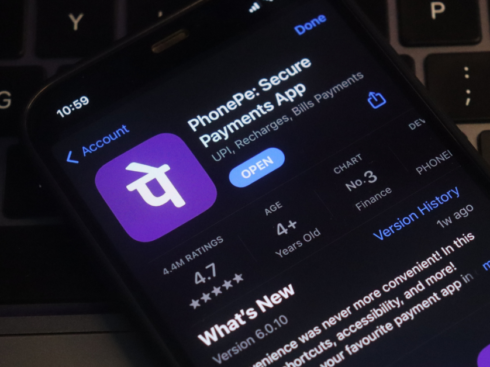
SUMMARY
Blinkit posted an adjusted EBITDA loss of INR 259 Cr during the entirety of Q2 FY23
All key metrics including number of order, AOV, GOV and revenue related to the quick-commerce startup registered quarterly growth
Deepinder Goyal said he understands that investors currently ascribe zero value to the Blinkit business, but that this will change in due course of time
Quick-commerce startup Blinkit’s acquisition continued to weigh heavily on Zomato as the foodtech giant’s consolidated loss zoomed 35% quarter-on-quarter (QoQ) to INR 250.8 Cr in the September quarter of the current fiscal year.
Blinkit posted an adjusted EBITDA loss of INR 259 Cr during the quarter, while Zomato’s total adjusted EBITDA loss, excluding the quick-commerce entity, stood at INR 60 Cr.
It is pertinent to note that the Gurugram-based giant completed acquisition of Blinkit on August 10. As a result, the quick-commerce startup’s financials were included as part of Zomato’s Q2 numbers only for the 50-day period. The adjusted EBITDA loss of INR 259 Cr was for the entirety of the quarter (90 days).
“Defined as EBITDA (+) share-based payment expenses (-) rental paid for the period pertaining to ‘Ind AS 116’ leases,” noted Zomato while defining adjusted EBITDA.
Overall, the foodtech major saw its total adjusted EBITDA loss hover around the INR 192 Cr mark in Q2 FY23 compared to INR 310 Cr in Q2FY22.
A good proportion of the expenses per order value for Blinkit were on account of costs related to dark stores and replenishment while last mile delivery costs accounted for the second major chunk.
Despite Zomato trimming its loss and scaling up numbers, its quick-commerce subsidiary dragged down numbers. However, the foodtech giant continues to be bullish about Blinkit and.
“I know that most investors currently ascribe zero value to the Blinkit business, and that’s understandable. But I am confident this will change in due course of time,” said Zomato MD and CEO Deepinder Goyal.
In a letter to shareholders, Zomato CFO Akshant Goyal highlighted key operational metrics of the quick-commerce startup. A breakdown of the data revealed that Blinkit’s revenue grew 43% quarter-on-quarter (QoQ) to INR 236 Cr.
Number of orders grew 17% QoQ to 26.1 Mn, while average order value (AOV) rose nearly 8% to INR 568 on a quarterly basis. Average monthly transacting users also surged 15% while gross order value saw an uptick of 26% QoQ to INR 1,482 Cr in Q2 FY23.
Blinkit’s adjusted EBITDA loss reduced to INR 259 Cr in Q2 FY23 from INR 326 Cr in the previous quarter. As a result, Blinkit improved its adjusted EBITDA, as a percentage of gross order value, to -17.5% in the quarter under review from -27.8% in Q1FY23.
“…you can see the progress has been across all the levers (and not just any one). Growth is the biggest lever driving improvement in profitability. Higher throughput leads to growth in revenue per order as well as lower cost, given the high operating leverage in this business,” said Blinkit CEO Albinder Dhindsa while responding to a question about quarterly improvement in the startup’s EBITDA loss.
Zomato-Blinkit Integration
“So far, I am very happy with the Blinkit acquisition. As we see this business more closely, our level of excitement has only increased. Our hypothesis seems to be playing out on both strong customer adoption as well as the core economic model. I am (nervously) excited about where we are headed in this business,” Goyal wrote.
Replying to a question, Deepinder also said that the integration of both teams did face some problems, but the consolidated entity was ‘past’ all that pain.
Zomato and Blinkit have also leveraged synergies to integrate systems and share their resources. A case in point has been the grocery tab on the Zomato app itself which according to Dhindsa, could accelerate new customer acquisition for the quick commerce startup.
“We have also started looking at demand heat maps on Zomato’s platform to identify high potential neighbourhoods to launch new dark stores in. On the supply chain front, Hyperpure has built high quality temperature-controlled warehousing infrastructure for fruits, vegetables and other perishable items. We have started leveraging this infrastructure for Blinkit’s requirements,” added the Blinkit CEO.
Besides, Blinkit has also been experimenting with delivery fleet integration with Zomato in select locations.
Zomato has been in the line of fire ever since it executed the $568 Mn acquisition of Blinkit in an all-stock deal earlier this year. The acquisition itself was mired in controversy as investors raised a slew of issues related to corporate governance structures and high value paid by Zomato. Another issue was the conflict of interest regarding the relationship between Blinkit cofounder Albinder Dhindsa and Zomato cofounder Akriti Chopra, who are married to each other.
The aftermath saw a bloodbath on Dalal Street as Zomato shares witnessed a major selloff. Such was the situation that Zomato stock plummeted to an all-time low. Many institutional investors also fled the startup once the lock-in ended, triggering another selloff.
While the stock has somewhat stabilised, it is nowhere near its all-time high of INR 169.10 from around a year ago. Shares of Zomato ended 2.07% lower at INR 63.95 on the BSE on Thursday.


























